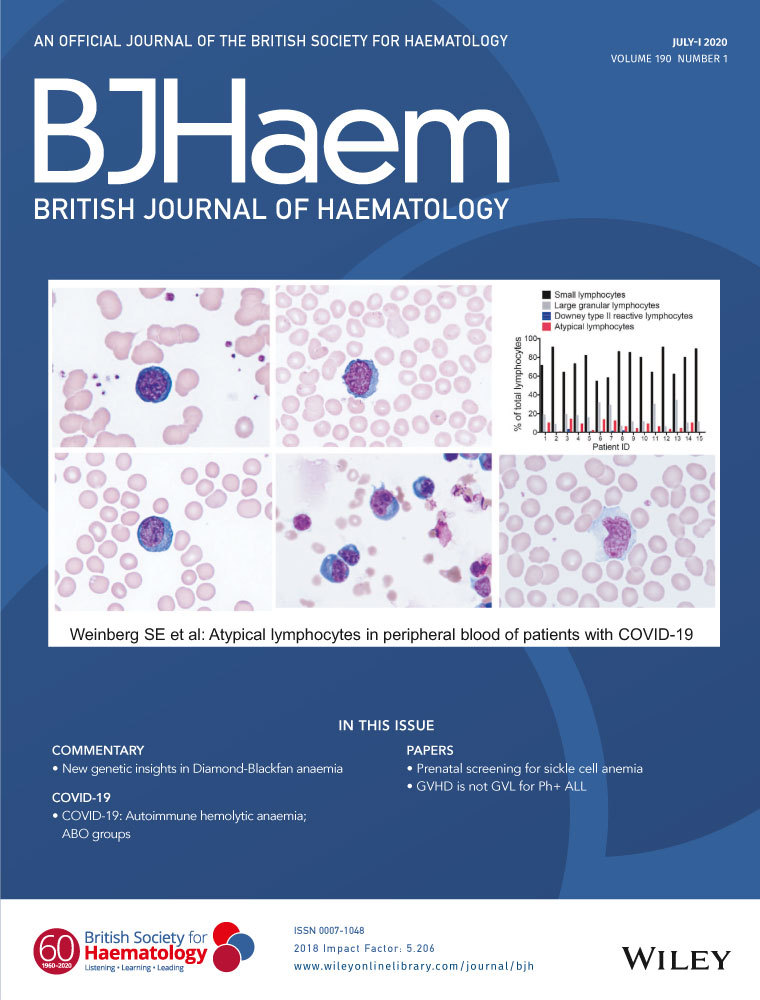Diamond–Blackfan anaemia: understanding an old disease
Diamond–Blackfan anaemia (DBA [MIM: 105650]), is an inherited bone marrow failure syndrome, originally referred as red cell aplasia by Josephs in 1936 and as congenital hypoplastic anaemia by Diamond and Blackfan in 1938. The first causative genetic lesion was identified in the ribosomal protein S19 (RPS19) in 1999. Since then, autosomal dominant pathogenic DBA mutations have been found in another 19 of the 80 ribosomal protein (RP) genes. X-linked mutations in two non-ribosomal genes, namely GATA-binding protein 1 (GATA1) and TSR2 ribosome maturation factor (TSR2) have also been identified in patients with DBA. Both genes affect ribosome biogenesis, with GATA1 being a master erythroid transcription factor, and TSR2 a RPS26 chaperone protein. The tumour protein 53 (p53) pathway has been shown to be activated in DBA and has been established as a critical mediator of many of the clinical features of ribosomopathies. Based on these, the term ‘DBA’ currently implies a pathogenetic basis involving defective ribosome biogenesis (Léger-Silvestre et al., 2005; Da Costa et al., 2018a,b). In this respect, the term ‘DBA-like’ disease is being used for entities of congenital red cell aplasia with intact ribosomal function. Examples of this are the biallelic pathogenic mutations in the adenosine deaminase 2 (ADA2)-encoding cat eye syndrome critical region protein 1 (CECR1) gene and homozygous mutations at the erythropoietin (EPO) gene (Hashem et al., 2017; Kim et al., 2017).
Furthermore, it is well known that DBA is often associated with congenital anomalies and other features, e.g. short stature, developmental problems, immune dysregulation and cancer predisposition. In this respect, the term ‘Diamond–Blackfan anaemia’ is misleading, as it does not reflect the syndromic characteristic of the disease.
DBA is estimated to occur in five to 10 out of 1 000 000 live births. DBA fulfills criteria for a rare disease, which in European Union is defined as a disease with a prevalence of less than five patients/10 000 population. Collecting enough data to extract meaningful conclusions on patients with rare haematological diseases like DBA, Fanconi anaemia and severe chronic neutropenia is impossible without collaboration. Towards this end, different local and international registries, as early as in 1991 (Czech Republic, North America, etc.), and consortia, like the Euro-DBA, which connects registries, treatment sites and research institutions have been established, based primarily on existing collaborative networks within the paediatric haematology-oncology scientific community (Vlachos et al., 2001; Quarello et al., 2020). The role of these collaborations is pivotal in advancing knowledge and understanding both of the pathogenesis and the clinical course of these rare entities. All these efforts have established DBA to be a complex disease with significant heterogeneity, both in its clinical presentation and course, and in its genetic basis. Although there is some correlation between genotype and the occurrence of congenital anomalies, this correlation is even weaker between genotype and either treatment response, spontaneous haematological remission or cancer development. In all published series, even with extensive mutational screening analysis using various methods, no pathogenic molecular defect can be documented in 20–35% of the patients. Different diagnostic strategies have been proposed with next-generation sequencing becoming more widely used, while others, like the Italian Registry, suggest a combination of ribosomal RNA assays with Sanger sequencing and multiplex ligation-dependent probe amplification (Da Costa et al., 2018; Quarello et al., 2020).
The inability to identify the genetic defect in around a quarter of patients, along with the uncertainty in the prognosis, underlines the need to continue research and enhance scientific collaborations. Well-organised and longitudinal registries are essential to this effort.




